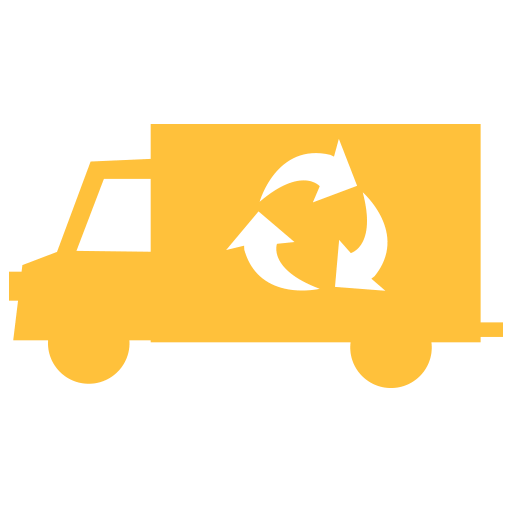The Green Kitchen: How to Recycle Pots and Pans Responsibly
Posted on 03/11/2025
Are your trusty old pots and pans ready to retire? If so, you face a common kitchen dilemma -- what to do with unwanted cookware that's seen better days. Tossing them in the trash isn't eco-friendly, but is there a greener path for these kitchen essentials? Welcome to The Green Kitchen! In this comprehensive guide, we'll show you how to recycle pots and pans responsibly, reduce environmental impact, and play your part in building a more sustainable planet.
Why Properly Recycling Pots and Pans Matters
Cookware might seem innocuous, but each year, millions of pots and pans end up needlessly in landfills. Most cookware is made from valuable metals like aluminum, stainless steel, or copper--materials that can be recycled and reused many times without losing quality. Improper disposal of cookware contributes to:
- Resource Waste: Metal production is energy-intensive. Recycling reduces mining and conserves energy.
- Environmental Pollution: Non-biodegradable cookware sits in landfills for centuries, leaching chemicals into the soil.
- Missed Economic Value: Metals are valuable commodities that cities can profit from recycling.
Learning how to recycle pots and pans responsibly helps both the environment and the community's bottom line.

What Types of Pots and Pans Can Be Recycled?
Before tossing that battered frying pan into the recycling bin, it's vital to know which types of cookware are recyclable and how to prepare them for recycling. A wide range of cookware falls into this category:
- Stainless steel pots, pans, and utensils
- Aluminum cookware (such as non-stick or anodized pots)
- Copper cookware
- Cast iron skillets
- Metal baking sheets and trays
Items with wooden handles or glass lids may need to be disassembled. Cookware with plastic, ceramic, or enamel coatings may have different recycling requirements. Always check labels or manufacturer information if in doubt.
Common Kitchen Cookware Recycling Challenges
Recycling old pots and pans isn't always straightforward. Many municipal recycling programs do not accept cookware curbside. Non-stick coatings, rubber handles, or mixed materials complicate the process. Here's why:
- Mixed Materials: Pots and pans may combine metals with plastics, glass, or rubber, requiring separation before recycling.
- Non-Stick Coatings: Teflon or ceramic coatings can't always be recycled with the metal base and may need removal.
- Local Recycling Rules: Each city or region has unique recycling guidelines. Not all facilities process metal cookware.
How to Prepare Old Cookware for Recycling
Make sure your kitchen tools are ready for the recycling center:
- Remove Non-Metal Parts:
- Unscrew wooden or plastic handles, take off lids, and remove any silicone parts if possible.
- Clean Thoroughly:
- Rinse to remove food debris and greasy residue.
- Sort by Material:
- Group by metal type if your recycling facility requests it (aluminum, stainless steel, etc.).
Where and How to Recycle Pots and Pans Responsibly
Responsible cookware recycling might require a little more effort than tossing it curbside, but it's well worth it. Here are your main options:
1. Local Scrap Yards
Most scrap metal yards accept old pots and pans, even with some plastic or rubber attached. Many offer cash for metals like aluminum, copper, and stainless steel. It's one of the most efficient ways to recycle cookware.
2. Specialized Recycling Programs
Some cities run periodic collection days or have drop-off centers for "hard to recycle" household items, including cookware and small appliances. Check your municipality's website for:
- Household hazardous waste events
- Metal recycling drop-off sites
- Electronics/appliance recycling programs (which sometimes accept pots and pans)
3. Manufacturer Take-Back Programs
Certain cookware brands run return and recycle schemes. For example, GreenPan and Le Creuset occasionally offer trade-in or recycling incentives. Always check a product's website or contact their support team for recycling advice.
4. Donation and Reuse
If your pots and pans are still in usable shape, consider the reduce, reuse, recycle mantra:
- Thrift Stores and Charity Shops: Organizations like Goodwill or Salvation Army sometimes accept gently used cookware.
- Shelters and Food Banks: Women's shelters, shelters for the unhoused, or community kitchens gladly accept usable pots and pans.
- Online Local Groups: Use platforms such as Freecycle, Facebook Marketplace, or local Buy Nothing groups to give cookware a second life.
5. Upcycling and Creative Reuse
Even if your pots and pans are no longer kitchen-worthy, many creative upcycling ideas exist:
- Garden Planters: Old metal pots make quirky, durable planters for flowers, herbs, or succulents.
- Wall Art: Repurpose lids as clock faces, paint pans to create signs, or use handles as hooks.
- Crafts: Kids can use baking trays or pans for craft projects or sensory play.
Step-by-Step Guide: How to Recycle Old Cookware
Ready to take action? Here's a straightforward plan to recycle old pots and pans responsibly:
- Assess Condition: Can the cookware be donated, or only recycled?
- Remove Non-Metal Components: Separate as much as possible.
- Clean Thoroughly: Wash off any food debris or grease.
- Research Local Options: Use online tools like Earth911 or your city's recycling website to find nearby drop-off spots or scrap yards.
- Transport Safely: Bundle up sharp or heavy items so they don't cause injury or damage during transport.
- Follow Instructions at the Facility: Some require items to be clearly labeled or sorted.
Special Cases: Non-Stick Cookware, Enamel, and More
Not every pot or pan is created equal in the eyes of recycling facilities. Here's how to handle tricky cases:
- Non-Stick Cookware (Teflon or Ceramic):
The Teflon or ceramic coating cannot be recycled, but most facilities will accept non-stick pans and process the metal. Some require you to remove the non-stick layer first (if possible), so always check. - Enamel-Coated Cookware:
Enamel is fused glass, making it difficult to separate from the metal. If the recycling site accepts it, it will likely crush everything and melt down the scrap. - Glass, Ceramic, or Stoneware Cookware:
These are not recyclable through standard metal recycling or glass bottle recycling. Contact local facilities for advice, or consider upcycling.
Pro Tips for a Green Kitchen: Sustainable Choices for the Future
- Choose Durable, Recyclable Materials like stainless steel, cast iron, or pure aluminum for future cookware purchases. These metals are easier to recycle at the end of their life.
- Buy Less, Buy Better: Investing in high-quality cookware reduces the need for frequent replacements, ultimately producing less waste.
- Repair, Don't Replace: Many handled or lids can be replaced, and even warped pans can be fixed at metalworking shops.
- Engage Your Community: Organize a cookware swap or group recycling trip to make green choices easier for everyone.

Frequently Asked Questions About Recycling Pots and Pans
Can I put pots and pans in the curbside recycling bin?
No, most curbside recycling programs don't accept pots and pans. These can damage sorting equipment. Instead, use scrap metal drop-off locations or specialized recycling centers.
What about non-stick or damaged cookware?
Heavily scratched, warped, or Teflon-coated pans still contain valuable metal. Most scrap metal yards will take them, but always confirm with your chosen recycling center first.
Will I get paid for recycling cookware?
Some scrap yards pay for metal by weight. Aluminum and copper are especially valuable, while steel and iron have lower payouts. Payment varies by region and current market rates.
Are there cookware brands that recycle for you?
Companies like GreenPan, Le Creuset, and Calphalon occasionally run recycling or trade-in promotions. Check manufacturer websites for current offers.
Making the Responsible Choice: Final Thoughts on Sustainable Cookware Disposal
In our quest for a greener kitchen, recycling old pots and pans responsibly is an achievable, impactful practice. By understanding recycling challenges, following proper preparation steps, and embracing reuse and upcycling, you can ensure that your cookware enjoys a second life -- either as recycled metal or as a useful item for someone else.
Let's make responsible disposal the norm:
- Recycle cookware thoughtfully
- Buy sustainably
- Share green kitchen tips with friends and family
- Encourage local businesses and organizations to champion cookware recycling
Together, we can cook up a cleaner, more sustainable future in every Green Kitchen!

 020 3409 1874
020 3409 1874 020 3409 1874
020 3409 1874




 House clearance
House clearance Rubbish collection
Rubbish collection





